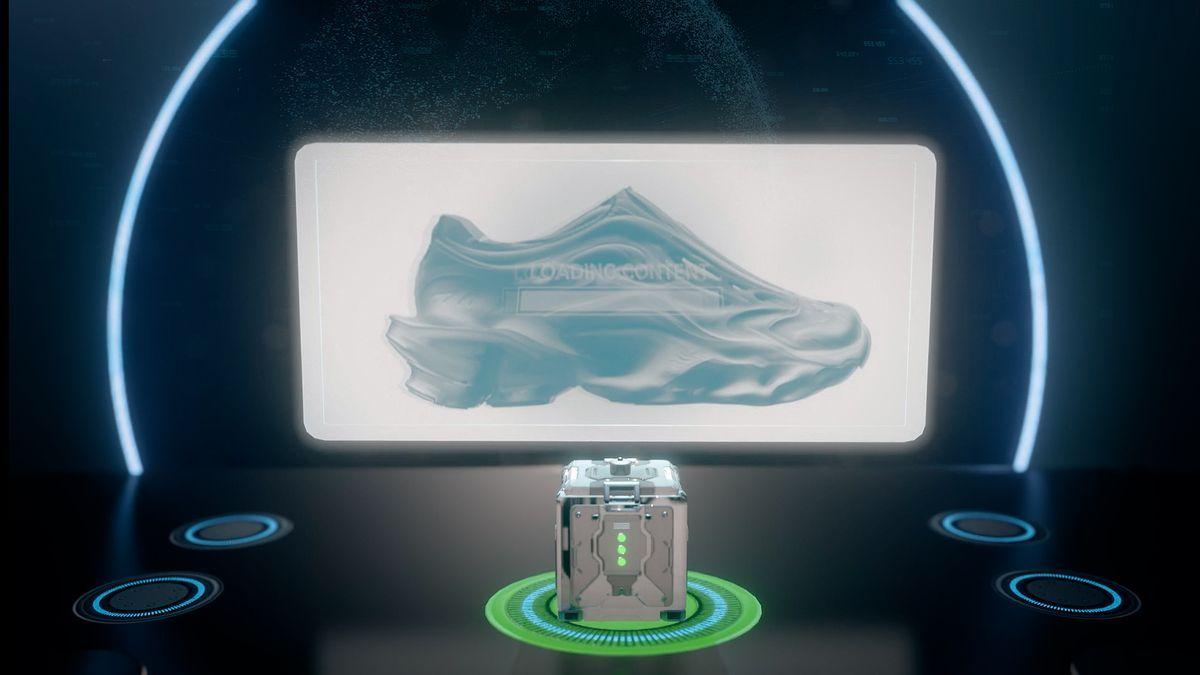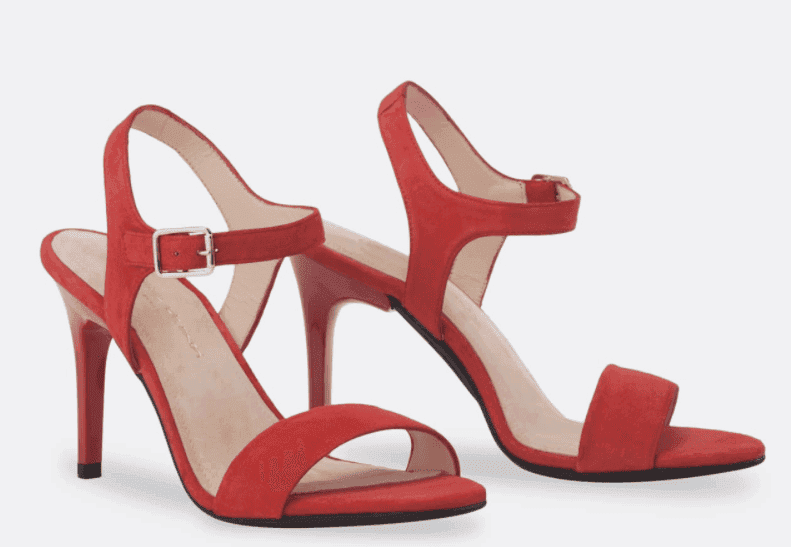AI-Designed, 3D-Printed Shoes: A Glimpse into the Future of Footwear
3 Sources
3 Sources
[1]
Are these AI-designed shoes the future of footwear?
The $150 shoes use smartphone foot scans for a fully customized fit. If you like Crocs but wish they had more of a science-fiction backstory, you're in luck. A startup company named Syntilay is using AI and 3D printing to produce a new line of shoes. The futuristic footwear is available now for $150 a pair. These slides aren't cheap, but innovation rarely is. Syntilay uses a mix of AI tools supplemented by human artistry to create its shoes, which look more than a little like a deep sea fish at first glance. The designers relied on Midjourney to develop the basic shape of the shoe. After that, a human artist refined the idea with a sketch for inspiration uploaded to Vizcom AI, which produced a 3D model based on the sketch. AI then helped design and embed textures and patterns into the shoe design, completing their look. Entrepreneur Ben Weiss founded Syntilay, but it has the backing of Reebok co-founder Joe Foster, who added some credibility to the idea. The shoes come in five colors: orange, red, beige, black, and blue. They are supposed to evoke the work of Syd Mead, the artist behind the iconic visuals in Blade Runner and Aliens. The $150 shoes are 3D printed in Germany and specially made for each customer, shipping out after about three weeks. If you want to buy a pair, you are asked to scan your feet with a smartphone camera so that the shoes will fit perfectly, even adjusting for the usual slight differences between people's right and left feet. There's also the matter of practicality. While scanning your feet with a phone camera sounds straightforward, not everyone is eager to go full techie just to buy shoes. And what happens if the fit isn't quite right after all that scanning and printing? These are hurdles Syntilay will need to address as it scales its operations. The question, of course, is whether the market is ready for AI-driven footwear. Syntilay's shoes will have to prove they are worth the expense and wait when it comes to things like comfort and durability. $150 is a pretty big price tag when generic slides similar to Crocs can cost $20 or even less. Syntilay has to hope its design, custom-fit promise, and the gimmick of AI design win over early adopters. There have certainly been personalized shoes before, but combining AI and 3D printing may entice those looking to be trendsetters.
[2]
World's first AI-designed shoe is 3D-printed to your foot's...
A 3D-printed shoe designed by artificial intelligence is hitting the market today, and the futuristic footwear is first of its kind to be commercially available to the general public, its creators claim. Syntilay CEO Ben Weiss, 25, and Reebok co-founder Joe Foster, 89, who have partnered on the high-tech venture, told USA Today that 70% of the custom-fit shoe's design -- which was crafted to look like the bridge of a yacht -- was created by AI technology. "We think it's going to be a big trend, likely for other types of fashion-apparel products," Weiss said of integrating AI. "It's a much more efficient way to design things." The design team drew inspiration from spaceships and boats, Weiss told USA Today, and asked AI to incorporate the artwork of Syn Mead, the artist who worked on films like "Blade Runner" and "Aliens," into the design of the shoe. The technology was also utilized to determine shading. If they had used "traditional" design methods, Weiss noted, the slides "may have looked very different." The $149.99 slide -- which comes in orange, red, beige, black and blue -- is tailored to the wearer's foot. According to the site, the customer is asked to scan their feet with their phone camera within two weeks of purchasing, after which they will have to wait approximately three weeks for their kicks, individually printed at a factory in Germany, to arrive. "It went from the first stages of these concepts, generating the artwork, then we had our designer make a sketch based on that, which saves a lot of time because you know exactly where you want to be at. Then the team used AI to generate a 3D model from the sketch," Weiss explained. "It's supposed to be the best fit you can possibly get." According to USA Today, Syntilay relied on remote work to fuel the popularity of their product, deciding to first make slides. "People are wearing slides all over the place," Weiss said, adding that the team wanted the shoe to "have this classy, yet really futuristic feeling to it." "I think a lot of people will really enjoy wearing something that's on the cutting edge on this." But Sneaker News editor-in-chief John Kim begs to differ. He told USA Today that, although there's "some short-term novel appeal" to AI in fashion, the larger community "ultimately cherishes the distinct human eye" in design. While some brands have incorporated artificial intelligence into design processes, Kim noted that "a 100% AI-designed sneaker has limited potential because it lacks the human essence and brand DNA." Syntilay, however, is only producing the footwear in limited quantities because of "how expensive they are to make and just the constraints with typical 3D printing where we are today," explained Weiss, who is only expecting to produce a few thousand pairs. "You're not going to get volume, but you're going to get history," said Foster.
[3]
'Classy, yet futuristic': See the first AI-designed, 3D printed shoe available to buy
Sixty-seven years after co-founding Reebok, 89-year-old Joe Foster is now partnering with a 25-year-old entrepreneur to market what the pair say is the first AI-designed commercially available shoe to consumers. The futuristic-looking shoe designed by Ben Weiss and Foster takes inspiration from the designs of a yacht and a spaceship, they say. "We wanted to have this classy, yet really futuristic feeling to it," said Weiss, CEO of Syntilay, a Fort Lauderdale, Florida-based company. Other shoe companies have 3D printed shoes; Nike and adidas have both unveiled such footwear. They do not appear to be widely available yet to the public and are available in limited quantities on secondary marketplaces. Foster and Weiss say their product, designed with the help of AI technology is a first for a commercially sold, fully-3D printed shoe available to the public. The Syntilay shoe launches Jan. 22. The shoe - which is a slider, not a sneaker - is designed on top to look like the bridge of a yacht, Weiss said. How are AI designed, 3D-printed shoes designed and manufactured? AI technology - including Chat GPT - was essential to the Syntilay team being able to create the shoe's appearance. "Otherwise, with traditional (design), it may have looked very different," said Weiss. Weiss and his team used concept images with AI technology to create the design. Using the inspiration of a yacht and spaceships, the team also asked AI to take the artwork of famous sci-fi artist Syd Mead, who made designs for sci-fi films such as Blade Runner, Aliens and Tron, to incorporate into the slide. The team also used AI to figure out the exact shading of the shoe, Weiss said. "It went from the first stages of these concepts, generating the artwork, then we had our designer make a sketch based on that, which saves a lot of time because you know exactly where you want to be at. Then the team used AI to generate a 3D model from the sketch,'' said Weiss. "The unique aspect of it is that nobody has designed a commercially available shoe designed by AI,'' he added. "We've seen some concept images teased up with different products, but none of it has been really feasible." Some human oversight went into the shoe, but 70% of the shoe's design was done using AI, he said. John Kim, editor-in-chief of Sneaker News, said he doesn't think AI-designed 3D shoes are going to resonate long-term with the general public. "There might be some short-term novel appeal, but the sneaker and fashion community ultimately cherishes the distinct human eye behind footwear design (and design as a whole)," Kim said. "For example, Kanye West is building an AI team within his Yeezy brand, but ultimately it is Kanye West that is the sole factor in driving interest and without him, the brand no longer exists." AI could be used to assist the creation to some degree like what Nike and adidas has done, Kim said, "but a 100% AI-designed sneaker has limited potential because it lacks the human essence and brand DNA." AI design in general is inconsequential to driving consumer interest, Kim said. "Consumers tend to make choices based on personal fashion, social clout, budget, or comfort. AI-designed shoes don't really fall in the first three categories, so unless the shoe is significantly more comfortable than its competitors, it's hard to see AI-design alone driving interest. AI shoe designers hope to get ahead of a trend Weiss, however, and his investors, which include Weiss, his father, Farley Weiss, and entrepreneur Murray Friedman, hope to be ahead of the curve on a trend - designing consumer products via AI. He hopes the company can eventually design AI-gear for celebrities and influencers, along with everyday consumers. "We think it's going to be a big trend, likely for other types of fashion-apparel products,'' he said. "It's a much more efficient way to design things." Another unique feature is the use of AI to make sure the shoe fits you exactly. The consumer's foot is scanned via a smartphone program to the consumer's foot specifications and then 3D printed. "It's supposed to be the best fit you can possibly get," he said. There are also still regular shoe size references if a consumer does not have access to a smartphone for the more customized fit, Weiss said. AI brings the future to shoe designs, Reebok founder says For Foster, who took the Reebok brand and turned it into a popular company for aerobic activities, the idea of being part of a shoe designed with AI is exciting. "You're not going to get volume, but you're going to get history," said Foster, by video chat. Joe and his wife, Julie, are among six advisers for Weiss' company, Syntilay. Another adviser includes Kevin Harrington, one of the original sharks on the TV show, Shark Tank. While athletic shoes were his bread and butter when he was at Reebok, Joe Foster, who stepped back from Reebok in 1990, said he now believes that sliders and clogs are the new hot item. Similar to how Reebok was able to pivot from a running shoe company to a leader in aerobic shoes and products when it saw where the business needed to move, Foster said he believes Syntilay can pivot if needed. But to start, the company is banking on the popularity of slides. Is the AI-designed slide available now? The shoe is available now via the company's website, www.syntilay.com. The shoes come in "standard" sizes, though each shoe is customized to the consumer's foot using a scanning program on the phone. There are currently five colors - orange, red, beige, black and blue - costing $149.99 each. Each shoe is individually 3D printed for the particular buyer at a facility in Germany, Weiss said. Weiss said Syntilay was specific in trying not to do any manufacturing in China, which could have potentially changed the price of the product with President Donald Trump proposing tariffs be put on products imported from China, Canada and Mexico. To start, the company will probably not make more than a couple thousand pairs given "how expensive they are to make and just the constraints with typical 3D printing where we are today,"said Weiss. Turnaround time for consumers will be four to six weeks after ordering, though Weiss said he hopes to shorten that to two to three weeks with each order before shipping. What is different about this shoe? Weiss said the detail in the shoe, including the patterns on the bottom, which add to the traction, make it stand out from others in the slide category. The company is also banking that the popularity of slides will be big with the work-from-home culture. "People are wearing slides all over the place," he said. What's the future of Syntilay's futuristic shoe and company? Weiss said this is the first step toward using AI to design shoes and other individualized products for consumers. "I think a lot of people will really enjoy wearing something that's on the cutting edge on this," Weiss said. Betty Lin-Fisher is a consumer reporter for USA TODAY. Reach her at [email protected] or follow her on X, BlueSky, Facebook or Instagram @blinfisher and . Sign up for our free The Daily Money newsletter, which will include consumer news on Fridays, here. Stephen J. Beard is a graphics journalist on the USA TODAY Graphics team. Reach him at [email protected] or @StephenBeard on X and BlueSky.
Share
Share
Copy Link
Syntilay, a startup backed by Reebok co-founder Joe Foster, launches the world's first commercially available AI-designed and 3D-printed shoes, promising custom fit and futuristic design.

AI Meets Footwear: Syntilay's Revolutionary Shoe Design
In a groundbreaking fusion of artificial intelligence and footwear design, startup company Syntilay has launched what it claims to be the world's first commercially available AI-designed and 3D-printed shoe. The futuristic slides, priced at $149.99, promise a custom fit and a design that pushes the boundaries of traditional footwear
1
2
3
.The Minds Behind the Innovation
Syntilay, founded by 25-year-old entrepreneur Ben Weiss, has partnered with 89-year-old Reebok co-founder Joe Foster to bring this innovative product to market. The collaboration bridges generations of shoe design expertise with cutting-edge technology
2
3
.AI-Driven Design Process
The shoe's design is 70% AI-generated, utilizing various AI tools including Midjourney and Vizcom AI. The process began with AI-generated concept art inspired by spaceships, yachts, and the work of sci-fi artist Syd Mead. Human designers then refined these concepts, with AI assisting in creating 3D models, textures, and patterns
1
2
3
.Custom Fit Through Technology
Syntilay's approach to sizing is equally innovative. Customers are asked to scan their feet using a smartphone camera within two weeks of purchase. This data is used to create a perfectly fitted shoe, accounting for the slight differences between left and right feet
1
2
.Production and Availability
The shoes are 3D-printed in Germany and shipped to customers after approximately three weeks. Currently available in five colors (orange, red, beige, black, and blue), Syntilay is producing limited quantities due to manufacturing constraints and costs
1
2
3
.Related Stories
Market Reception and Challenges
While Syntilay is betting on the appeal of cutting-edge design and perfect fit, industry experts have mixed opinions. John Kim, editor-in-chief of Sneaker News, suggests that while there might be short-term novelty appeal, the sneaker community ultimately values the human touch in design
2
3
.Future Implications
Weiss and Foster see this as the beginning of a trend in fashion and apparel design. They envision AI playing a significant role in creating products for celebrities, influencers, and everyday consumers alike. However, questions remain about the practicality, comfort, and durability of AI-designed footwear
1
3
.As Syntilay steps into the market with its AI-designed shoes, it not only challenges traditional footwear design but also opens up discussions about the future role of AI in fashion and consumer products. The success of this venture could potentially reshape the landscape of shoe manufacturing and design in the coming years
1
2
3
.References
Summarized by
Navi
[1]
[2]
Related Stories
Recent Highlights
1
Google launches Gemini 3 Flash as default AI model, delivering speed with Pro-grade reasoning
Technology

2
OpenAI launches GPT Image 1.5 as AI image generator war with Google intensifies
Technology

3
OpenAI launches ChatGPT app store, opening doors for third-party developers to build AI-powered apps
Technology








